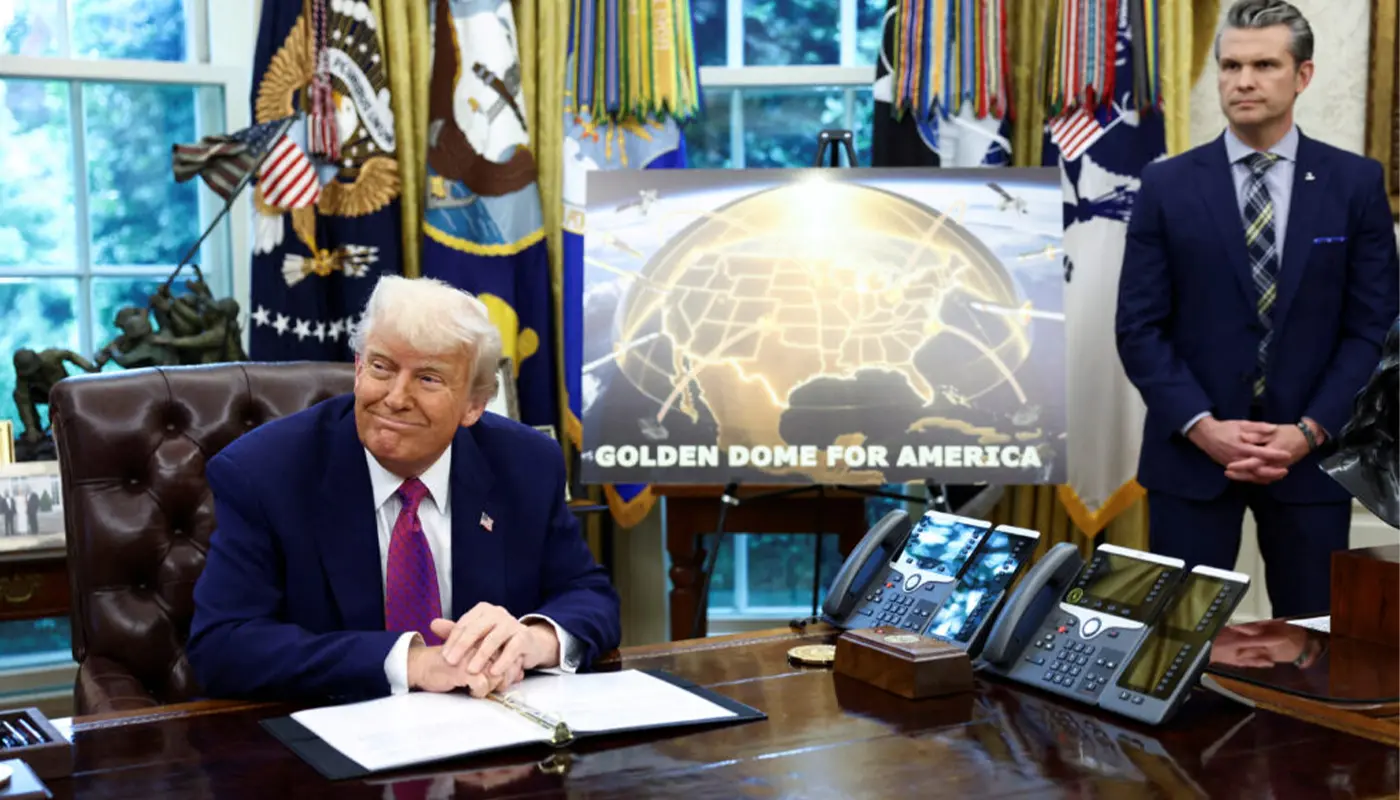In May 2025, U.S. President Donald Trump formally announced an ambitious missile defence project dubbed the Golden Dome, a system intended to defend the continental United States from a spectrum of aerial and space-borne threats.
The proposal, still largely conceptual, has triggered debates about technological feasibility, strategic balance, and the role of western allies in a rapidly evolving security environment.
The Golden Dome is envisaged as a “system of systems” that would integrate ground, sea and space-based sensors and interceptors to engage threats at multiple phases: pre-launch, boost, mid-course, and terminal descent.
Its name draws deliberate inspiration from Israel’s Iron Dome, though the American system would operate on a vastly different scale and against far more advanced weapons.
Trump pledged that Golden Dome would be full operational by the end of his term in 2029, with an initial price tag of around <$831 billion (CBO estimate), $175 billion (White House estimate) including a down payment of US$25 billion in a reconciliatory spending bill.
The Congressional Budget Office, however, suggests the long-term costs could range well beyond that figure, depending on the scale and complexity. General Michael Guetlein of the U.S. Space Force was named to lead the programme.
What It Means for Western Allies
For U.S. partners in Europe, the Indo-Pacific, and elsewhere, Golden Dome presents both opportunities and dilemmas.
On one hand, an advanced shield could potentially be extended to protect allied territories or forward-deployed forces, particularly in theatres vulnerable to ballistic or hypersonic threats.
Some analysts foresee new defence bargains, wherein allies contribute resources in exchange for integration into the system’s protective overlay.
Canada, for instance, has already entered talks with the U.S. about participation. Canadian Prime Minister Mark Carney acknowledged dialogue over joining Golden Dome, underlining that such cooperation would likely involve significant cost-sharing.
Yet many European states have remained cautious, fearing exclusion from U.S.-led systems or asymmetric burdens in contributions.
However, critics caution that Golden Dome may recalibrate strategic dependencies. Allies may find themselves drawn more tightly into U.S. space-based architectures, potentially ceding autonomy over air and missile defence decisions. Integration might also impose costs, both financial and political, on smaller states.
Moreover, Golden Dome’s ambition risks provoking adversarial pushback. Russian officials have warned that such a system would destabilize strategic parity and compel Moscow to accelerate countermeasures.
China has accused the U.S. of weaponising space and breaching the spirit of the Outer Space Treaty. The Kremlin has suggested the move may force a restoration of bilateral arms control talks, after the breakdown of key treaties in recent years.
Challenges & Critical Questions
Even among U.S. policymakers, the Golden Dome faces deep scepticism. Many observers view the three-to-four-year timeline as overly ambitious given the technological obstacles: handling hypersonic manoeuvre, ensuring precise discrimination in space, and integrating disparate sensor classes are formidable engineering tasks.
Some critics liken it to the Strategic Defence Initiative (“Star Wars”) of the 1980s, a grand vision that ultimately collapsed.
Costs pose another hurdle. Depending on deployment density and satellite scale, total costs through 2045 could reach into the hundreds of billions or even trillions of dollars.
The Arms Control Association warns that the system’s offensive potential, especially space-based interceptors, risks eroding existing arms control regimes.
Finally, political will and allied cooperation will be essential. For Golden Dome to have legitimacy beyond the U.S. mainland, the architecture must navigate sovereignty concerns, cost allocation, and strategic trust.
Whether western allies embrace or resist the system will play a pivotal role in whether it becomes a shield or a wedge in transatlantic and transpacific security.
Sources: CSIS, Arms Control Association, Atlantic Council, Reuters








